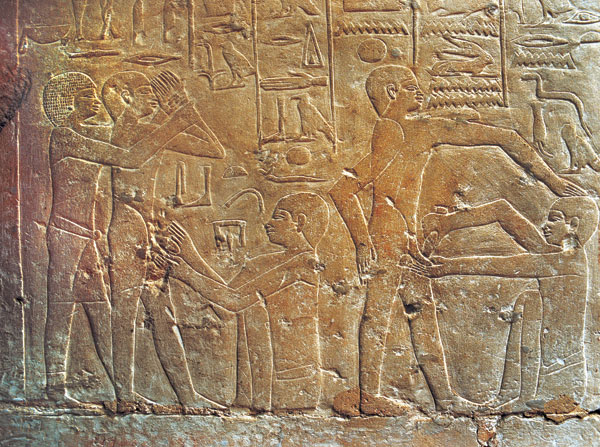Image Details

Werner Forman/Art Resource, N.Y.
The oldest known depiction of circumcision appears on a wall relief in the tomb of Ankh-ma-hor, architect and vizier to Pharaoh Teti (ruled 2345–2333 B.C.E.); the tomb is in Saqqara, about 15 miles southwest of Cairo. In the relief, two boys reaching puberty undergo the procedure. Shown in the photo, one of the boys tells the priest, “Rub off what is [there] thoroughly,” and the priest reassures him, “I shall make [it] heal.”
The Egyptians were just one of several Semitic peoples to practice circumcision; they were joined by such West Semitic nations as the Canaanites, Ammonites, Moabites, Edomites, Phoenicians, Arameans and—perhaps most famously—the Israelites. In contrast, there is no clear evidence that East Semitic peoples, such as the Akkadians, Assyrians and the Babylonians, practiced circumcision.
